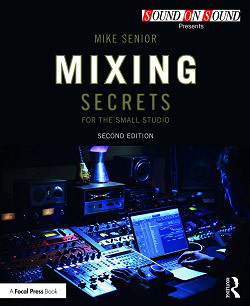

- #Best live sound mixing training professional#
- #Best live sound mixing training tv#
- #Best live sound mixing training free#
The ears of the person in charge of the FOH mix are receiving contributions directly from the stage’s instruments (sound coming directly from the guitar or bass amps, drums, etc., that is not necessarily coming from the PA), in addition to the PA sound. This is because the FOH mix was constructed for the venue, which certainly is not a perfect or ideal acoustic environment. Many tech volunteers don't realize that the FOH mix is not the ideal mix for broadcast, no matter how good it sounds within the church venue. Why do we need separate audio mixes? This is the most important question when dealing with broadcast audio. This is because in addition to the splitter, you need two consoles and basically two out-board processors in the case of an analog desk.
#Best live sound mixing training professional#
Having the ideal equipment setup for a professional live broadcast is not an option for most churches, since it can easily double the budget for audio alone. However, digital splitters provide a consistent, high-quality signal to all consoles.

All the others can use a trim to adjust the received signal levels. The only problem with digital splitters is that only one console has absolute control over the analog preamp of the analog-to-digital converter. Other splitters work in the digital domain, where the original signals from stage are converted to digital form and then copied and sent to different destinations in an audio digital network. There are also active splitters with sophisticated electronic circuitry. Some splitters have a ground lift switch in every channel to isolate the ground reference from the other split legs. Secondly, it also keeps the phantom power applied to the mics by the main console (usually the FOH or the monitor console) from reaching any of the other consoles.
#Best live sound mixing training free#
There are two important reasons for this: first, each of the split signals has the same level without any degradation in quality or signal strength and is free of noise that could be induced by any of the consoles connected to the splitter. However, in the other legs, each split channel is electronically isolated from the others by passing its signal through a high-quality, high-input impedance audio transformer.

One of the legs connects the inputs directly to the main console (usually the FOH).

This is done by means of a simple “Y-split” cable (yes, that simple) or a printed circuit board with branched signal tin conductors. The analog splitter is basically a huge snake with one leg of the snake picking up the input signals from the stage and bringing them to the actual splitter, where the signal of each individual channel is divided into two, three, four, or more copies. There are two ways to split the signals: digitally or with an analog splitter. This allows each destination to create an independent audio mix. These destinations could be a monitor console, a broadcast truck, a recording mixer, the front-of-house (FOH) console, etc. Ideally, all input channels from the stage (and any audio source from videos or files presented during the event) are shared by sending an exact copy of each input signal to different destinations. Throughout this piece, I will cover each of these problems and provide suggestions on solutions. The most frequent problems found in broadcast audio can be divided into three main categories: noise or interference, mix balance, and distortion. What constitute good audio signal? A good audio signal is one without distracting noise or interference, It has a well-balanced mix of the instruments or music, and the spoken word can be easily heard and understood. You cannot keep the attention of remote viewers on your broadcast or video streaming if the audio is poor, no matter how fantastic your video signal is, or how many camera transitions - with all the bells and whistles - you use during the broadcast. In this article, I want to share tips and techniques that help to set up, fix or improve most of the audio problems related to broadcast media.Ī good audio signal is more important than a nice HD video signal. The ones that have trouble with their broadcast audio often simply lack knowledge. The few that do have good audio are usually mega churches or other large churches that have invested a considerable amount of money into their audio chain. Unfortunately, not many churches have a good audio signal in their broadcast.
#Best live sound mixing training tv#
Most churches broadcast their worship services to some sort of mass media transport such as the Internet (video streaming), radio, TV channel, to other campuses, or they just record them for distribution later in audio CD, DVD, or Video-on-Demand (VOD).


 0 kommentar(er)
0 kommentar(er)
